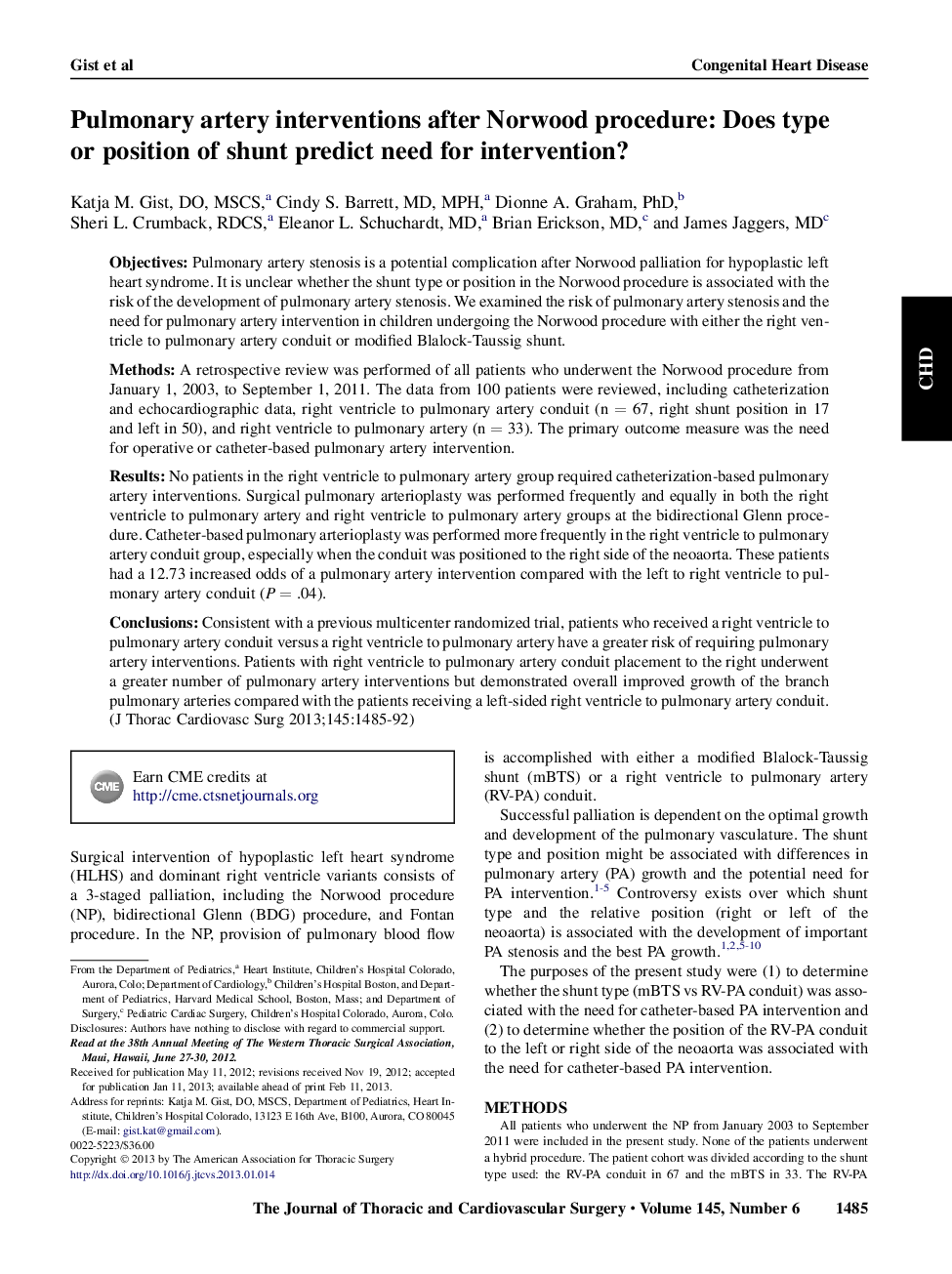| Article ID | Journal | Published Year | Pages | File Type |
|---|---|---|---|---|
| 2981194 | The Journal of Thoracic and Cardiovascular Surgery | 2013 | 8 Pages |
ObjectivesPulmonary artery stenosis is a potential complication after Norwood palliation for hypoplastic left heart syndrome. It is unclear whether the shunt type or position in the Norwood procedure is associated with the risk of the development of pulmonary artery stenosis. We examined the risk of pulmonary artery stenosis and the need for pulmonary artery intervention in children undergoing the Norwood procedure with either the right ventricle to pulmonary artery conduit or modified Blalock-Taussig shunt.MethodsA retrospective review was performed of all patients who underwent the Norwood procedure from January 1, 2003, to September 1, 2011. The data from 100 patients were reviewed, including catheterization and echocardiographic data, right ventricle to pulmonary artery conduit (n = 67, right shunt position in 17 and left in 50), and right ventricle to pulmonary artery (n = 33). The primary outcome measure was the need for operative or catheter-based pulmonary artery intervention.ResultsNo patients in the right ventricle to pulmonary artery group required catheterization-based pulmonary artery interventions. Surgical pulmonary arterioplasty was performed frequently and equally in both the right ventricle to pulmonary artery and right ventricle to pulmonary artery groups at the bidirectional Glenn procedure. Catheter-based pulmonary arterioplasty was performed more frequently in the right ventricle to pulmonary artery conduit group, especially when the conduit was positioned to the right side of the neoaorta. These patients had a 12.73 increased odds of a pulmonary artery intervention compared with the left to right ventricle to pulmonary artery conduit (P = .04).ConclusionsConsistent with a previous multicenter randomized trial, patients who received a right ventricle to pulmonary artery conduit versus a right ventricle to pulmonary artery have a greater risk of requiring pulmonary artery interventions. Patients with right ventricle to pulmonary artery conduit placement to the right underwent a greater number of pulmonary artery interventions but demonstrated overall improved growth of the branch pulmonary arteries compared with the patients receiving a left-sided right ventricle to pulmonary artery conduit.
